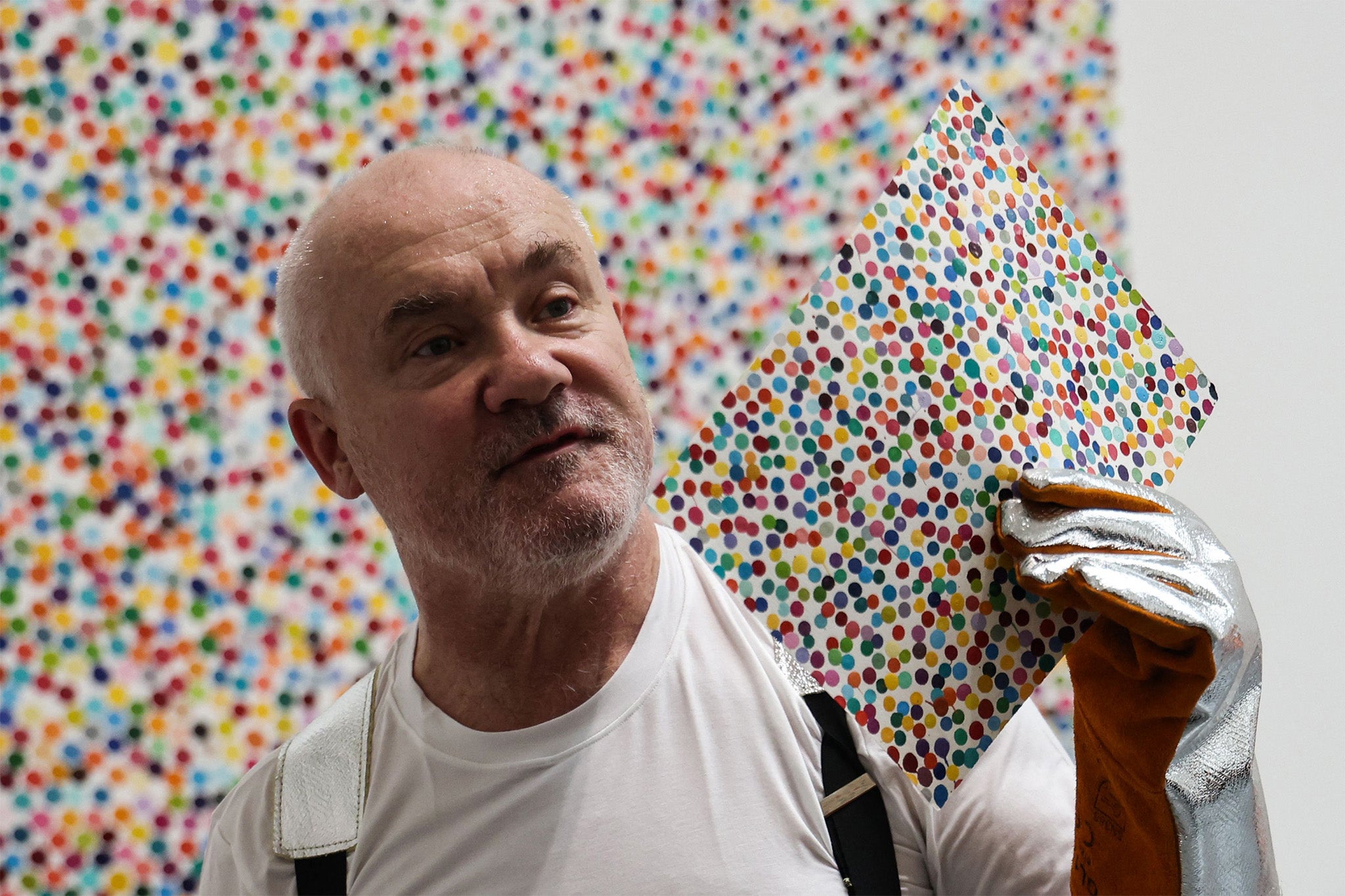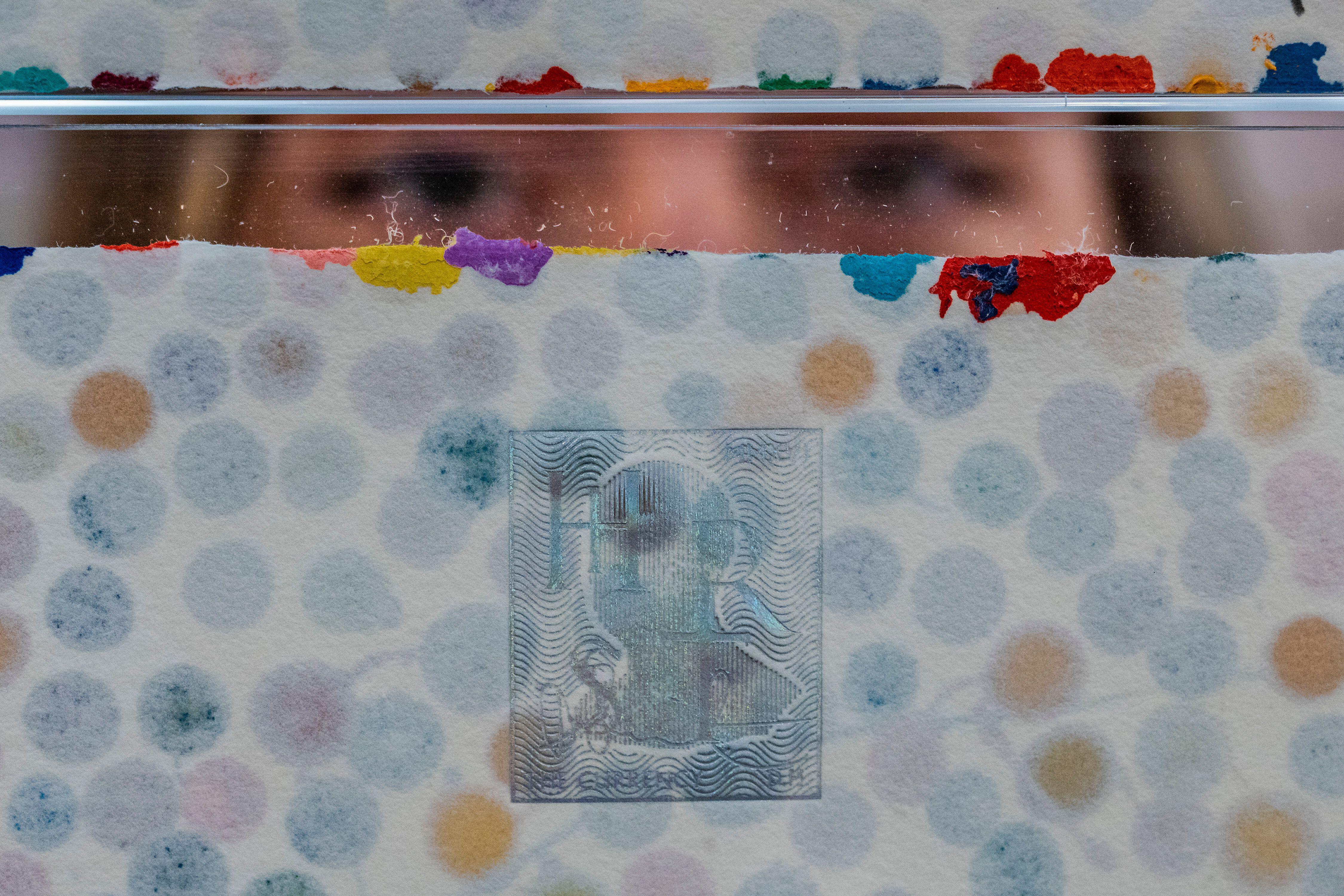At least 1,000 Damien Hirst artworks created years later than claimed, investigation finds
Lawyers have argued that the sale of the paintings was not misleading

Damien Hirst is once again at the centre of claims of falsifying the age of his artworks.
According to a Guardian report, “at least 1,000” of the 10,000 paintings used in his experimental 2022 project ‘The Currency’ were created at a later date than originally suggested.
The Turner Prize winning British artist, who made headlines when he offered the artworks in either physical or NFT form, was accused just months ago of labelling preserved animal artworks with dates suggesting they are decades older than they actually are.
Three artworks featuring animals preserved in formaldehyde were said to have been made in the 1990s, but an investigation found they were created by Hirst’s team in 2017.
Now, Hirst is again accused of falsifying the age of his works, this time his polkadot ‘The Currency’ collection which at the time of sale were advertised by Hirst and his company Science Ltd as being “created by hand in 2016”.
But sources close to the production process, including several artists hired to make them on a “Henry Ford production line”, said that many of the works were created en masse in 2018 and 2019.

Lawyers for the artist, 58, and his company have now defended their actions and said that it is customary to date paintings with the year of their project’s inception and not the date of their creation.
The pieces, of which there were 10,000 in total, made an estimated $18 million.
They were part of a project called The Currency, which aimed to create a type of money from art.
The paintings were sold in 2021 alongside optional NFTs, which gave buyers a permanent digital record of the works too.
Hirst said the project was “the most exciting” he had “ ever worked on by far” adding: “It comprises of 10,000 NFTs, each corresponding to a unique physical artwork made in 2016.”

Each painting was signed by the artist and featured the year 2016 inscribed on the back. They also featured a microdot to mark their authenticity.
When questioned about the revelations, lawyers did not comment on why Hirst had explicitly said the artworks were “made in 2016” but maintained their stance that it was not misleading, claiming that it is “customary practice” to mark artworks with the year of a project’s inception.
Recalling the process of creating the works at studios in Gloucestershire and London, one artist described it as “very, very tedious.”
A second added: “There were loads of sheets on these tables, and they were quite low so you had to constantly bend down to do the spots. After a while, some people were getting repetitive strain injuries.”
The Independent has reached out to a representative for Damien Hirst for comment.
Join our commenting forum
Join thought-provoking conversations, follow other Independent readers and see their replies
Comments
Bookmark popover
Removed from bookmarks